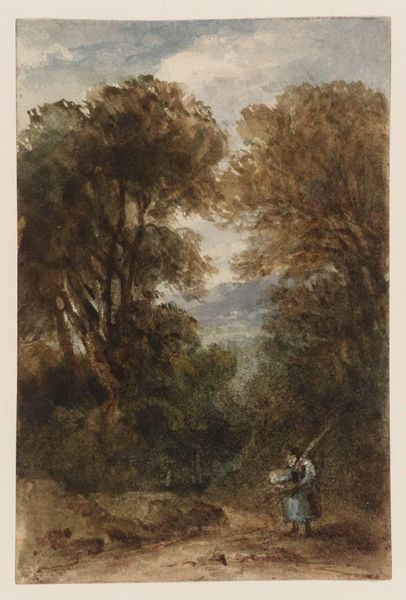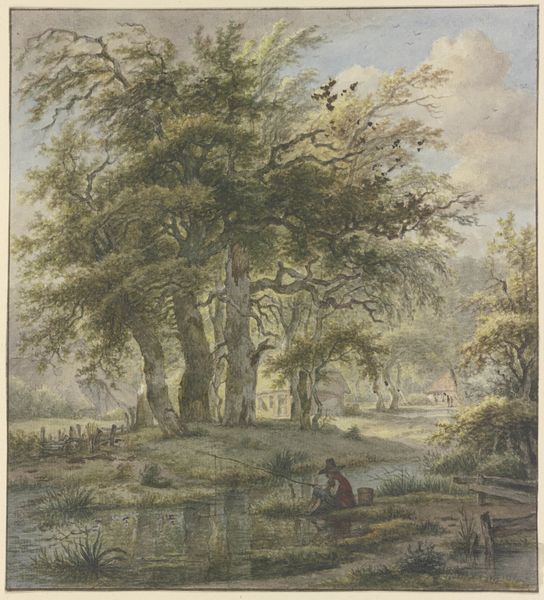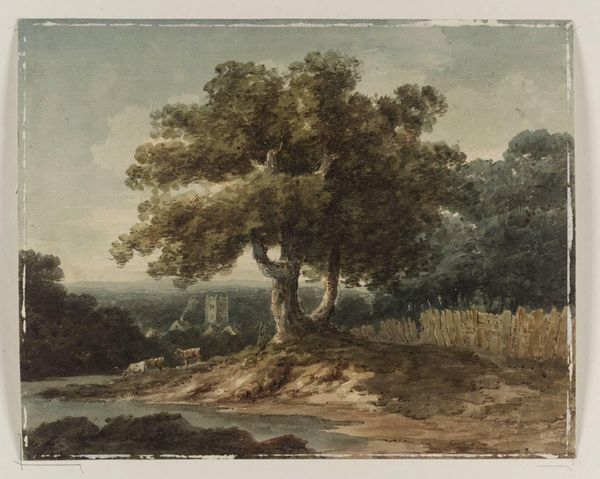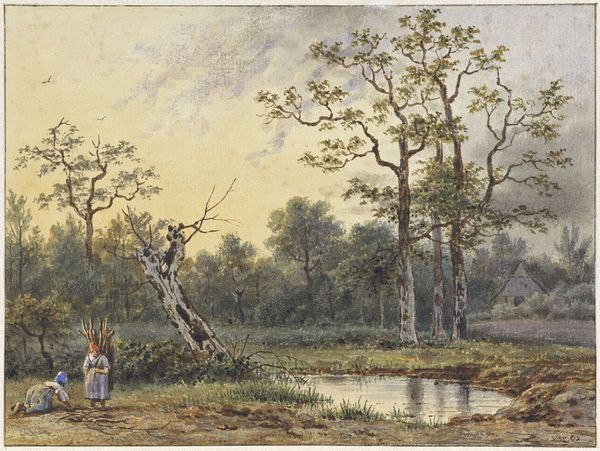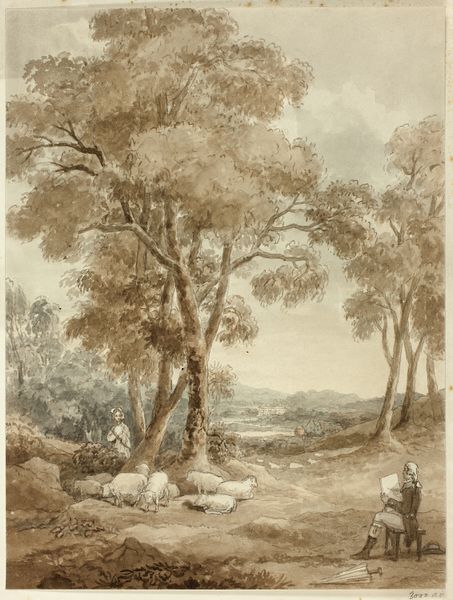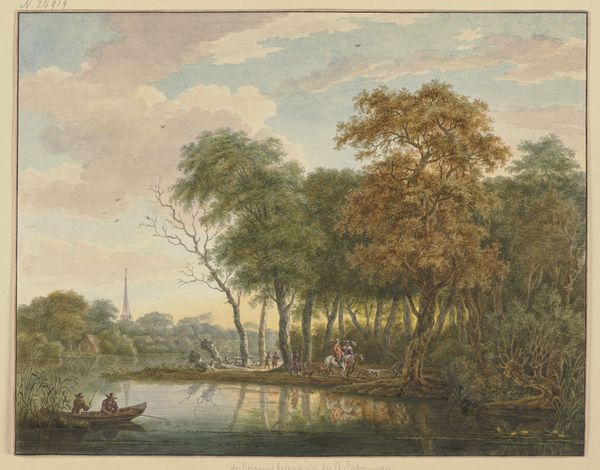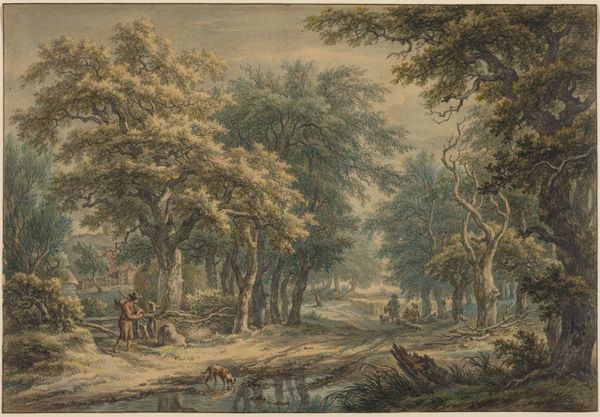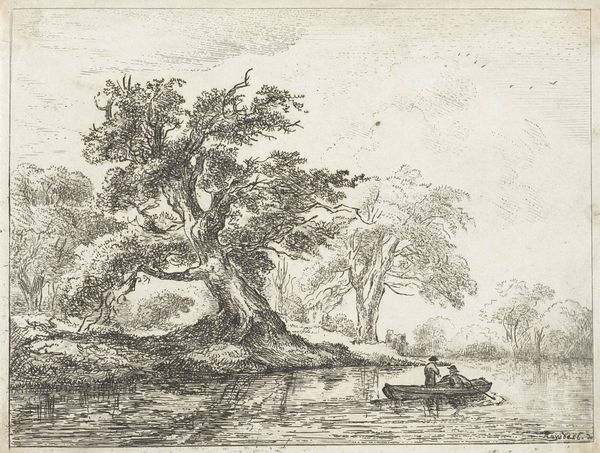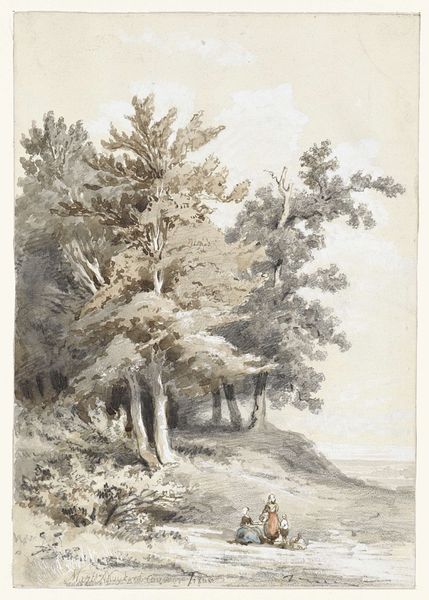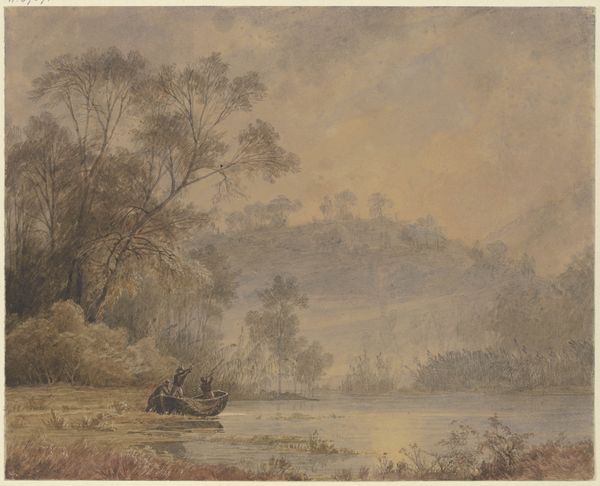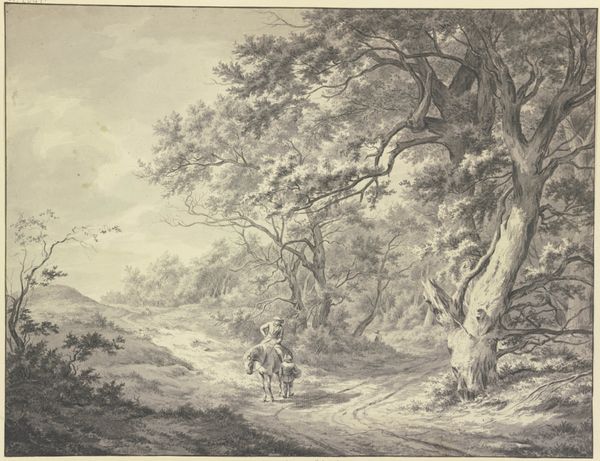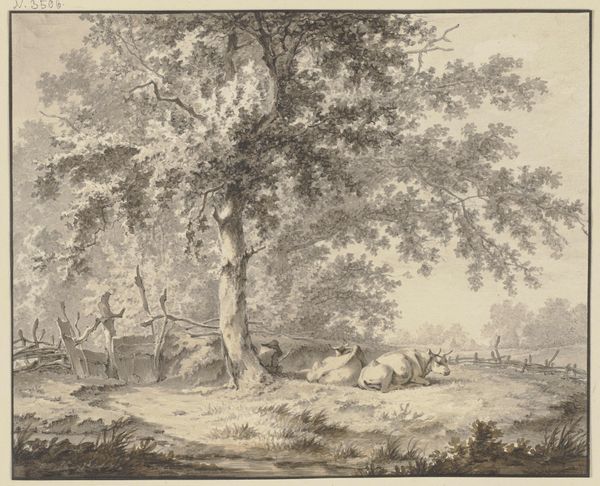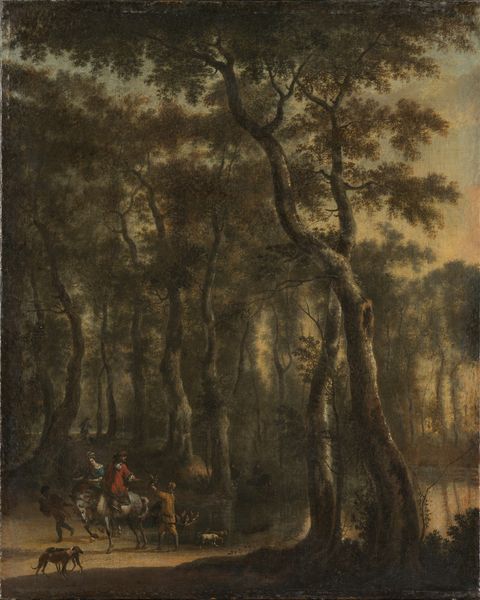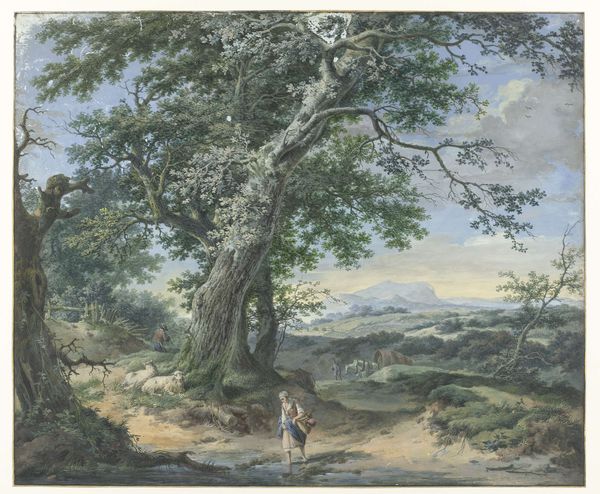
Dimensions: support: 169 x 219 mm
Copyright: CC-BY-NC-ND 4.0 DEED, Photo: Tate
Curator: This is Sir William Newton's "Willow Trees and a Fisherman," currently residing in the Tate Collections. Editor: It's quite moody, isn't it? The way the light reflects on the water is striking. Curator: Indeed. Newton, born in 1785, often captured scenes reflecting the social dynamics of his time. The labor inherent in fishing, particularly for sustenance, highlights a class divide. Editor: The watercolor medium itself speaks to accessibility. Unlike oils favored by the aristocracy, watercolor allowed for broader participation in art production. Curator: Absolutely. And the willow trees, symbols of mourning, might represent the changing landscapes and displacement impacting rural communities during that era. Editor: It makes me wonder about the fisherman's catch, or lack thereof. A small act of resistance against the economic tide, perhaps? Curator: That's a compelling perspective. Considering that this work is a modest 169 x 219 mm, its impact is amplified by these interwoven social narratives. Editor: It’s amazing how such a simple scene can reveal such depth.
